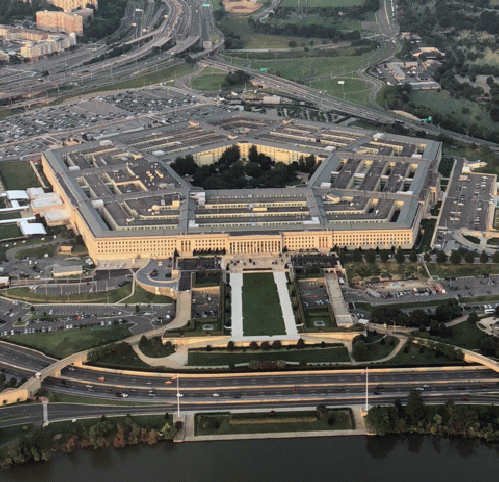
The Pentagon
(Image by Wikipedia (commons.wikimedia.org), Author: Touch Of Light) Details Source DMCA
Top U.S. officials want us to believe that the Pentagon carefully spares civilian lives while making war overseas. The notion is pleasant. And with high-tech killing far from home, the physical and psychological distances have made it even easier to believe recent claims that American warfare has become "humane."
Such pretenses should be grimly laughable to anyone who has read high-quality journalism from eyewitness reporters like Anand Gopal and Nick Turse. For instance, Gopal's article for The New Yorker in September, "The Other Afghan Women," is an in-depth, devastating piece that exposes the slaughter and terror systematically inflicted on rural residents of Afghanistan by the U.S. Air Force.
Turse, an incisive author and managing editor at TomDispatch, wrote this fall: "Over the last 20 years, the United States has conducted more than 93,300 air strikes -- in Afghanistan, Iraq, Libya, Pakistan, Somalia, Syria, and Yemen -- that killed between 22,679 and 48,308 civilians, according to figures recently released by Airwars, a U.K.-based airstrike monitoring group. The total number of civilians who have died from direct violence in America's wars since 9/11 tops out at 364,000 to 387,000, according to Brown University's Costs of War Project."
Those deaths have been completely predictable results of U.S. government policies. And in fact, evidence of widespread civilian casualties emerged soon after the "war on terror" started two decades ago. Leaks with extensive documentation began to surface more than 10 years ago, thanks to stark revelations from courageous whistleblowers and the independent media outlet WikiLeaks.
The retribution for their truth-telling has been fierce and unrelenting. WikiLeaks publisher Julian Assange is in a British prison, facing imminent extradition to the United States, where the chances of a fair trial are essentially zero. Former U.S. Army intelligence analyst Chelsea Manning spent seven years in a military prison. Former U.S. Air Force analyst Daniel Hale, who revealed murderous effects of U.S. drone warfare, is currently serving a 45-month prison sentence. They had the clarity of mind and heart to share vital information with the public, disclosing not just "mistakes" but patterns of war crimes.
Such realities should be kept in mind when considering how the New York Times framed its blockbuster scoop last weekend, drawing on more than 1,300 confidential documents. Under the big headline "Hidden Pentagon Records Reveal Patterns of Failure in Deadly Airstrikes," the Times assessed U.S. bombing in Iraq, Syria and Afghanistan -- and reported that "since 2014, the American air war has been plagued by deeply flawed intelligence, rushed and imprecise targeting and the deaths of thousands of civilians, many of them children."
What should not get lost in all the bold-type words like "failure," "flawed intelligence" and "imprecise targeting" is that virtually none of it was unforeseeable. The killings have resulted from policies that gave very low priority to prevention of civilian deaths.
(Note: You can view every article as one long page if you sign up as an Advocate Member, or higher).




